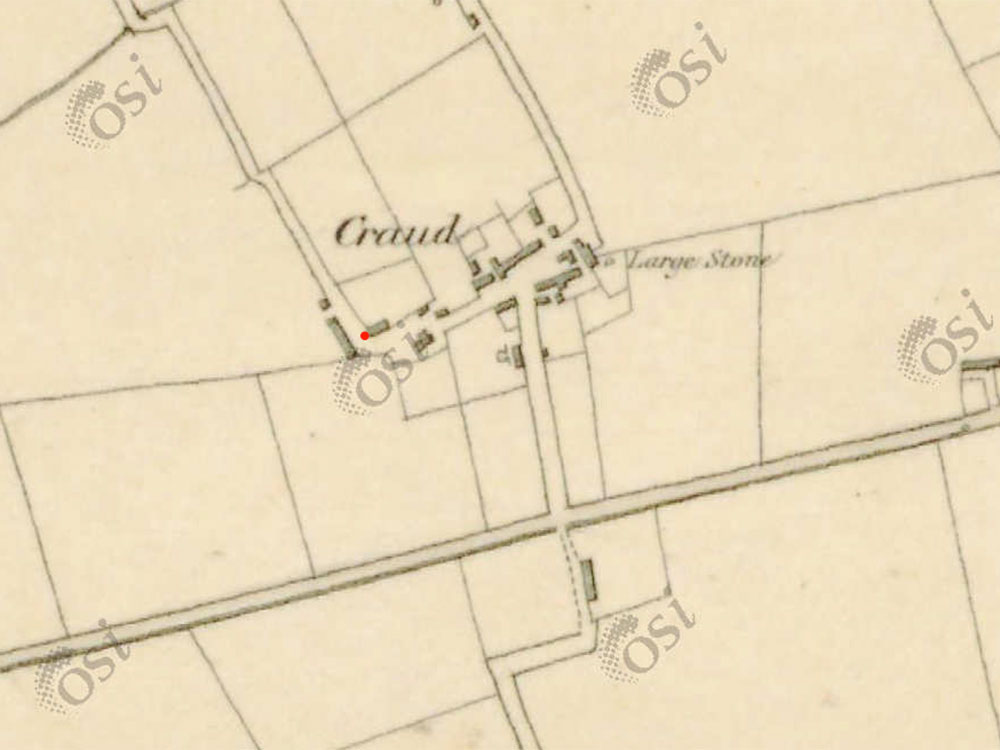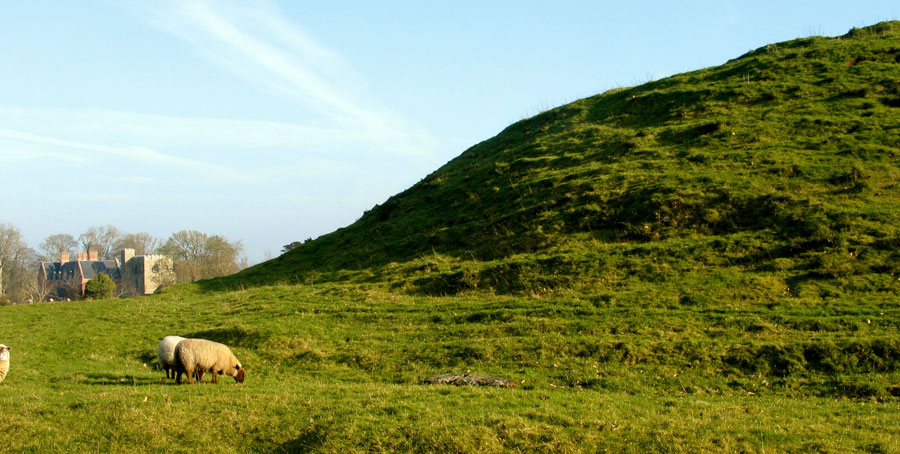Memoranda of recent operations at Dowth
(From the Minute Book of the Royal Irish Academy,
Antiquities vol. I, 1785-1850, 269-76.)
The tumulus of Dowth is situate between the Boyne & Mattock rivers, in the Barony of Slane, parish & townland of Dowth, & County of Meath. It is an equal distance West of Drogheda. The great size of this mound rendering it probable that it contain one or more Chambers similar to that at New Grange in its Vicinity, the operations to ascertain how far this supposition was well founded were commenced on the 27th September last under my direction.
The Superintendence of the work I undertook at the request of Captain Larcom, who has throughout manifested the greatest interest in the result of the undertaking. The form of the base of the Mound in the North & West sides is not so well defined as on the other sides, caused no doubt, by the removal of a considerable portion of the materials at some former period.
On part of the south and east sides the boundary is distinctly marked being formed of large stones, many of which are over 3 tons in weight.

The highest point of the Mound at present above the level of the adjoining land is 51.84 feet, but the summit of itwas at least 5 feet higher than this before our operations were commenced. datum line to which all the sectional heights have been reduced is the level of the Sill of the adjoining old Church door, on the Northern side of the building.
The eastern side of the mound is apparently in the condition in which it was originally. On reference to the section No. 2 it will be seen to be of a concave shape, and regular in the outline, to a height of 48.18 feet above the datum line. At this point a flattened span of nearly four yards wide, commences, forming the base of a Capping which completed the mound.
The highest point on the Section, above the datum line, is 52.77 feet. The Southern side of the Mound is at present formed of the Stones removed from the Centre in the course of our operations. These, as loosely thrown out, have assumed a convex form, aswill be seen by a reference to the Section No. 1& presenting an outline different from that of the Eastern side.
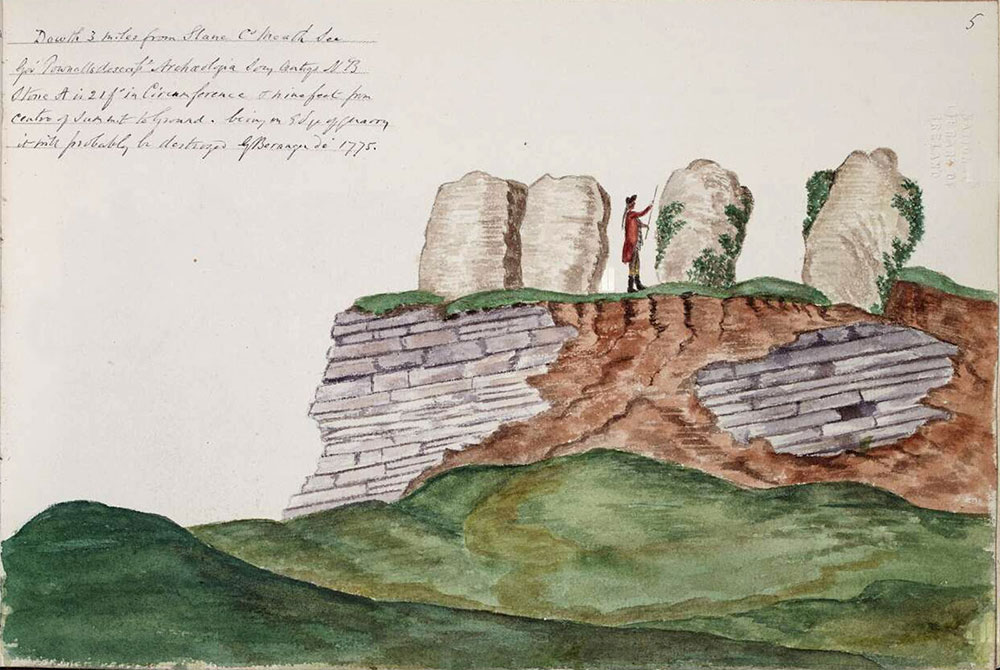
The Mound is composed altogether of small stones, varying in size from half a cubic foot down to that of road metal, some of which appear to have been collected off the surface of the surrounding land, some from the Rivers Boyne & Mattock, but by far the greater portion, from their angular shape, appear to have been quarried. The surface consists of a covering of rich loamy earth, about 18 inches in thickness.
When perfect, the cubical content of the whole may be estimated at about 75,000 cubic yards, and considering the probable means then available for performing such work, 6 men would be required to collect and place the materials of each Cubic Yard in a day, so that the formation of the Mound itself, without any reference to internal Chambers, would require the labour of nearly half a million of men for a day, when we consider the remote period at which this must have been executed, the limited number of men which could then have been procured for the purpose, the great difficulty of transporting such bulky materials to a distance as those stones surmounting the bank composing the chambers of the Mound, and the consequent great length of time which must have been consumed in the creation of the work, even this apparently rude structure will bear a favourable with some of the more celebrated works of modern times.
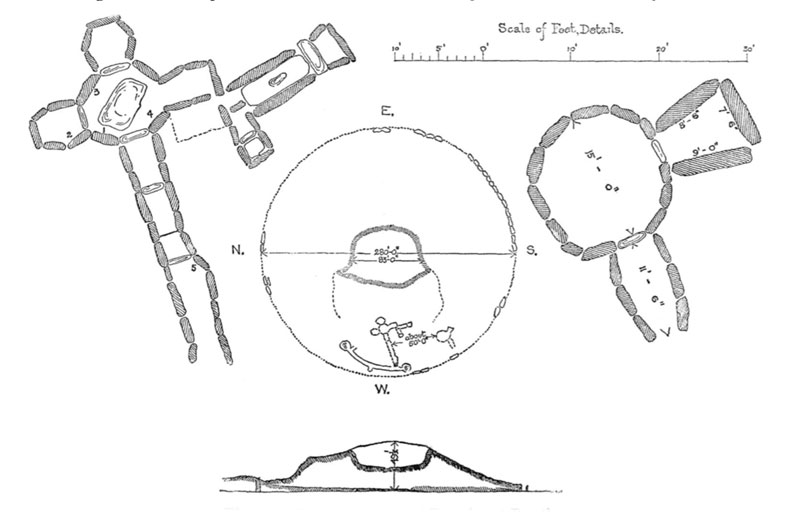
The difficulty of sinking a shaft from the top through a mass of small rubble comparison stones, the shifting nature ofwhich rendered staying of little value, if not altogether useless, induced me to make a horizontal cut from the margin towards the centre in the direction of the dotted lines on the plan. In the execution of this work I fortunately happened to pass close by the end of the passage leading to the Cruciform structure marked in the Western Margin of the plan.
The passage to this Chamber is 26 feet long & from 2 to 3 feet wide. The height of the entrance is about 4 feet & it gradually lowers towards the middle of the passage when the height is only 3 feet 8 inches, from this it again increases until it joins the Chamber, where the height is 6 feet. The passage is formed by single Stones placed on end sloping inwards towards the top, & stayed by sunken sills placed at intervals along it. The Northern side is formed by 9 stones, & the Southern had evidently a similar number, but one of them is now wanting.
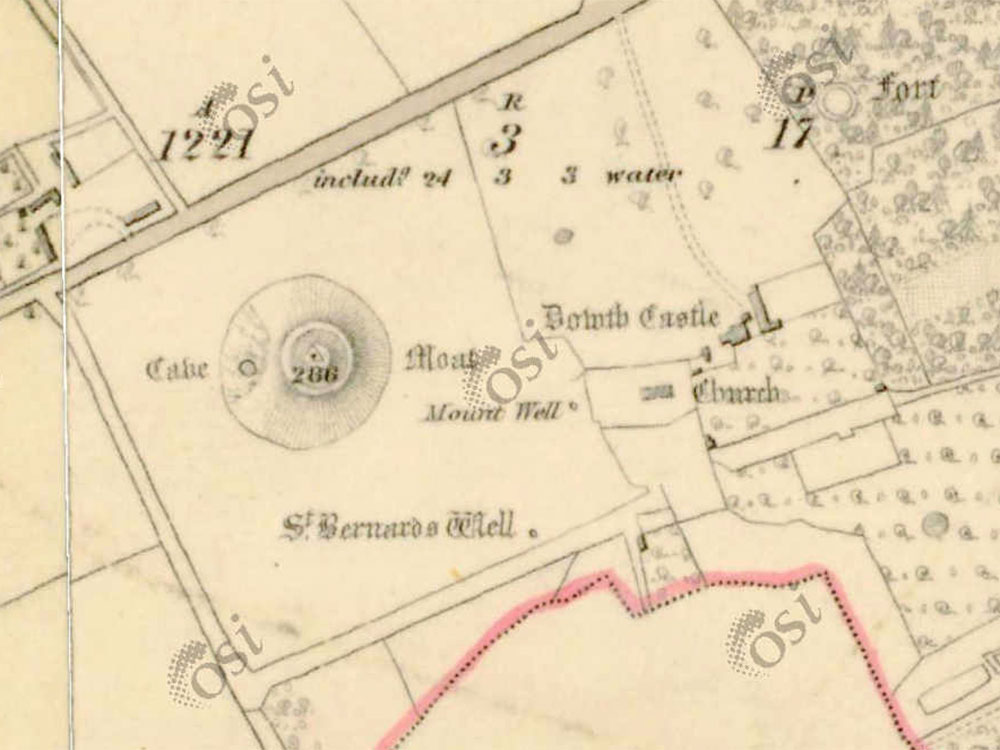
The Chamber to which this passage leads is about 7 feet square by 9 feet high, formed on the sides by 4 large stones, set on end, sunk, & varying in height from 7 feet 8 Ins. to 9 feet above the level of the floor. On these Stones are curious devices formed by a pointed tool, which cannot fail to be highly interesting to the Antiquarian. The 3 similar chambers at the angles of that point alluded to are each formed by five Stones placed similar to those already noticed.
In the progress of the excavation, the covering Stones of the whole of the passages & chambers were found to have been displaced & they were filled up with small Stones among which were found fragments of Bones in a calcined & perfect state, together with the pieces of the Stone basin now restored & placed in the large chamber also knife blades, a ring, a buckle, a glass & an amber bead, bronze pin of rude workmanship, and stone button or breast ornament of singular construction. After cleaning out the passage & chambers, the covering flags were replaced as nearly as possible in their original position.
From the Southern extremity of the cruciform chamber another passage extends in a South-easterly direction for a distance of 9 feet, having at its termination a small chamber about 3 feet square. Another similar small chamber projecting westward is situated near the juncture of the passage with the large chamber, as seen on the plan; after passing these chambers and extending the cutting towards the centre of the Mound, the materials removed were used to fill up the parts previously opened, & when the Centre was reached the opening in it was in the form of an inverted frustum of a cone, the diameter at top being about 70 feet & that at bottom being 8 in!
In the centre of the mound a curious funnel or Air shaft was discovered, about 5 inches in diameter neatly built with small flat Stones. This was reached about 17 feet from the datum line, & reached to the base of the tumulus. It did not appear to have any connection with any chamber or building which could afford any information as to the probable use forwhich it was designed. Above this funnel & near the surface of the mound several human bones were found, which with the articles already noticed as having been found in the chambers, were deposited in the Museum of the Academy.
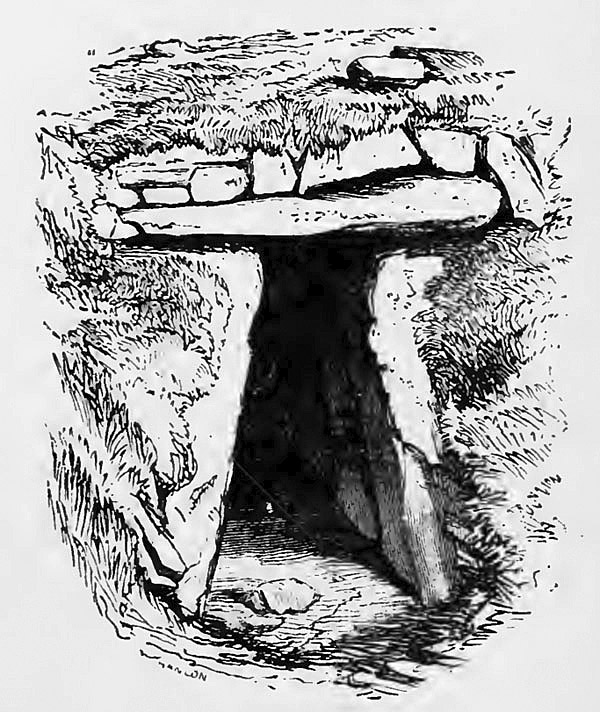
The quantity of materials removed during the course of these associates is about 4,000 Cubic Yards, which from the expenditure (nearly £100) has cost about 6d per cubic Yard. By a reference to the Section itwill be seen that the opening has been carried down 7 feet below the ground line, but as far as regards the discovery of a supposed central chamber or other remnant of Historic Value, the operation has not been successful, unless in so far as they have shown that no such exists. Whether other chambers such as the ruined chamber, now restored, exist in other parts of the mound is doubtful, but judging from the small chamber in the So. side, which is equidistant from the Centre of the Mound with the former one, it is not improbable that others are yet to be discovered.
Before concluding this brief notice I should not omit to mention that the plant necessary to carry on these operations has been kindly supplied by the Commissioners of Public Works, and I have also been much indebted to Mr. Blake of Dowth Hall, who also supplied barrows and other articles wanted for temporary use, and evinced a warm interest in furthering our operations.
For myself I have only to add that I have cheerfully devoted the necessary time to the superintendence of the work, and I am only sorry that my own expectations as well as those of the Gentlemen who so liberally supplied the funds for carrying it on have not been more fully realised.
Signed R. H. Frith.
Balbriggan, 13th March, 1848.




